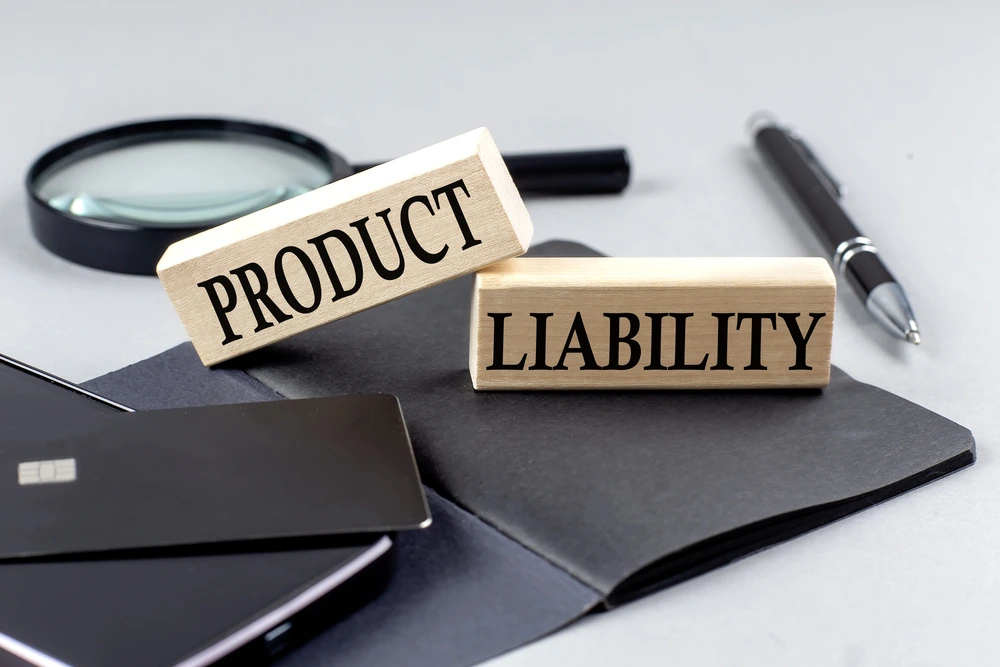If you’ve been injured because of some failure in a product, you may be able to bring a product liability claim. To do this successfully, you’ll need to understand exactly what the problem was so you know what type of claim to bring. A product liability attorney in Laramie, Wyoming can help you to bring the right claim and fight for your right to compensation.
Types of Product Liability Claims
There are four types of liability claims, and in most cases, you’re bringing a claim against the manufacturer of an item. There are some cases where you might make your claim against a retailer or wholesaler or some other distributor. The four types of claims are manufacturing defects, failure to warn, breach of warranty, and design defect.
Manufacturing Defects
A manufacturing defect is one of the most common of the liability claims, and it simply asserts that a specific item was made poorly. In other words, there is nothing wrong with the design and there was nothing wrong with the way you used it. The problem is that an error was introduced at the time the item was made which rendered it unsafe. A manufacturing defect can apply to an entire line of products that are made, for example, in a factory that uses a substandard part or has an error on the assembly line. It can apply to only one small batch of products, as well.
Failure to Warn
Failure to warn has to do with the advertising of a product and how to use it. If the manufacturer doesn’t provide proper instructions on how to use an item safely, or if there’s no warning to the user against certain risks to the use of that item, then you may be able to bring a product liability claim. The problem or danger needs to be something that is not obvious. In other words, while it can be something that is inherent to the item, it can’t be something so inherent to that item that common sense would tell anyone to be careful. For example, a knife is a sharp tool. Everyone knows this, and common sense should tell you to be careful when you use it. A manufacturer is not responsible to warn you that a knife is sharp: you buy it precisely because it is sharp. But if a knife is made specifically for slicing only delicate items, and the tip can break off easily if it is used for trying to cut other, larger or harder items, then the manufacturer should warn you about this.
There are two sides to the requirement to warn consumers about a product. On the one hand, a manufacturer is required to warn consumers about not just known dangers, but also potential dangers that could arise from a predictable misuse of a product. A classic example here is the Q-tip. The Q-tip has a clear warning telling consumers not to put the product in their ear, and that is because it is well known that many people do this. That makes it a predictable misuse of the product. On the other hand, a manufacturer is not responsible for every possible danger that could arise through an imaginative misuse of a product. They are only responsible to warn against those that they know about or should have known about.
Breach of Warranty
If an item has a warranty, but the item does not live up to that warranty, then if it injures you, or if it simply does not do what it is sold for the purpose of doing, you may be able to bring a claim. You can bring a breach of warranty claim against the manufacturer when there is an express, written warranty on the label or in the packaging of an item, in the advertisement for a product, or in the manual that comes with it.
There is also something called an “implied warranty” in Wyoming law. An implied warranty simply means that items for sale in the state are required to do what they are advertised as doing and be fit for the purpose for which they are sold and marketed. They must have merchantability, which simply means that they must be ready to be sold and used and not be broken or otherwise unfit.
There are also federal laws requiring companies to honor implied warranties under the concept of “fair value for money spent.” Because the value depends on the money that is spent, there is room for one product to be less good than another product because it’s cheaper. In other words, if you buy the $300 knife, you expect to use it in your kitchen for many years, long as you take good care of it. If you buy the five dollar knife off the shelf at a big box store, you cannot reasonably expect for it to last as long as the more expensive one.
Design Defect
Finally, sometimes the problem with the product is not the way it was manufactured but the way it was designed. In other words, even with the best possible manufacturing standards and highest quality components, the entire line of product is dangerous or unfit to purpose because of an error in the way it was planned. A common example here is vehicles that are prone to rolling over. Often this happens because something in the design caused them to be poorly weighted.
Bringing a Claim with Your Product Liability Lawyer in Laramie, Wyoming
To bring a successful claim, you will need to prove certain elements against the manufacturer, distributor, or retailer of a product. You cannot bring in action against a private party for product liability. If you bought something on Facebook marketplace, for example, that seller is a private individual and not responsible for any defects in manufacturing or even in the advertisement that they put up.
The next step is to prove what type of claim you’re bringing. Then you have to show that the defect which caused your injury or loss was actually an issue at the time that the manufacturer or the seller had control of the item, and that it reached you with no serious change in its condition. For example, say you buy a radio and have it shipped to you, and when you open it up, you can see that it sustained a lot of damage during transport. If you then plug it in and use it instead of returning it, and it shorts out and starts a fire in your home, the manufacturer will likely not be liable because there was a substantial change to the product between the time that they had it and the time that it arrived to you.
The next element is to prove that the defect made the product unreasonably dangerous, which is defined as more dangerous than a reasonable person should expect it to be when used as directed. Then you’ll have to link this defect in the product to the harm that you suffered and show precisely what that harm was, whether it was a physical injury or a financial loss.
Product liability claims are not simple, but we can help. Visit us at the Ochs Law Firm now for a free case consultation.







